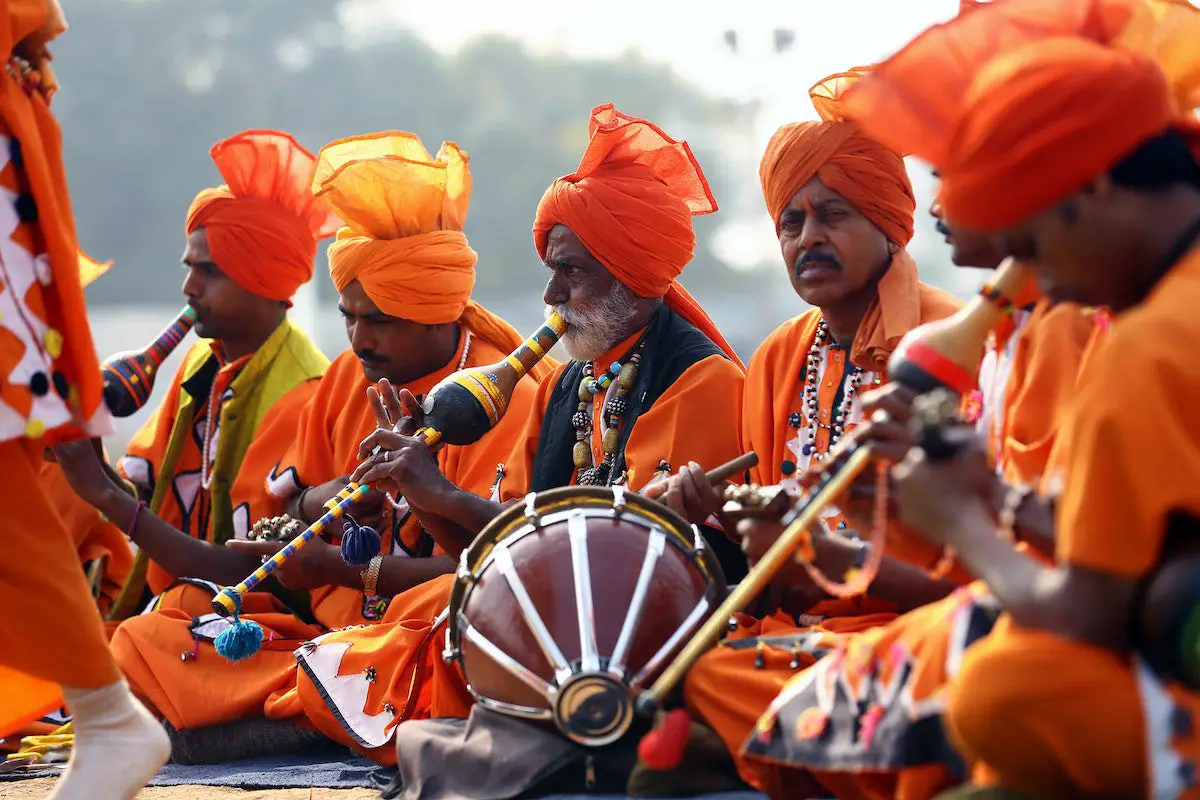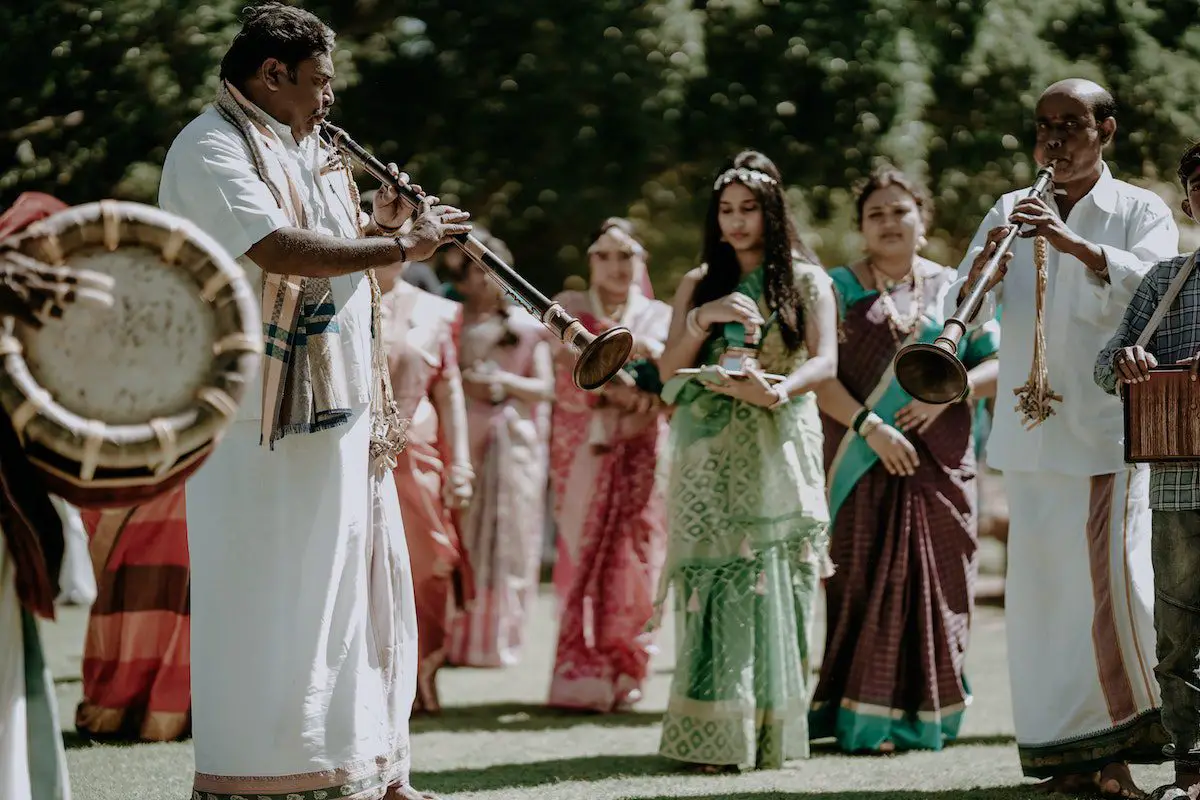Raga music, often regarded as the backbone of Indian classical music, is an intriguing, mystical, and captivating art form that is as ancient as the subcontinent itself. Embedded in each note is the rich cultural heritage, the vibrant tradition, that spans thousands of years. Are you intrigued by the rhythms and ragas, the ancient traditions and rich cultural expressions echoing through every beat? Strap in, ’cause this won’t be the typical ride down Abbey Road.
What is raga music? Raga music is a form of Indian classical music that uses a series of five or more musical notes upon which a melody is constructed. Each raga is associated with a specific mood, time of day, or season and is used as a framework for improvisation and composition.
What exactly defines Indian music?
Indian music echoes a fascinating blend of intricate melodies and complex rhythms, often seeming overwhelming to a novice. However, understanding the basic elements of melody, rhythm, and the instruments involved takes us a step closer to appreciating this extraordinary art form.

Besides melody, rhythm, or “tala,” plays a crucial role in Indian music. Syllables like “ta-ki-ta” or “ta-ka-di-mi” are used to form various rhythmic patterns. More complexity finds its way into the music with cycles of five, seven, nine, or ten beats. Indian percussionists use “bols,” special syllables that replicate specific drum sounds.
AKAI Professional MPK Mini MK3

AKAI Professional MPK Mini MK3
What’s the story behind Indian raga?
One central pillar of Indian music is the ancient system of ragas. Now, what’s a raga, you ask? Each raga is characterized by a unique blend of pitch combinations used in specific ways for ascending and descending scales. This system, known as “sargam,” serves as the foundation for learning and practicing Indian music.
Unlike Western music with primarily two scale types (major and minor), Indian music flaunts dozens of different ragas. Each raga sets the mood, often associated with a specific time of day, season, or even emotion. How cool is that?
What are the components of a raga?
A raga in Indian classical music consists of several key components:
- Swaras: These are the musical notes of the raga. There are seven basic swaras: Sa (Shadaj), Re (Rishabh), Ga (Gandhar), Ma (Madhyam), Pa (Pancham), Dha (Dhaivat), and Ni (Nishad). Each raga must contain a minimum of five notes, and the order in which they are used gives each raga its unique identity.
- Arohana and Avarohana: These represent the ascending and descending order of notes in the raga. This is essentially the ‘scale’ of the raga, which outlines the melody’s progression.
- Vadi and Samvadi: The ‘vadi’ is the most important note in the raga, often emphasized during a performance. The ‘samvadi’ is the second most important note, and it provides a counterpoint to the vadi.
- Pakad or Chalan: This is the characteristic phrase or sequence of notes which gives the raga its identity. It’s the ‘catch phrase’ of the raga, often repeated in performance.
- Thaat or Mela: This is the parent scale from which the raga is derived. There are ten thaats in Hindustani (North Indian) music and 72 melas in Carnatic (South Indian) music.
- Rasa: This is the mood or sentiment associated with the raga, such as devotion, love, compassion, valor, etc. Each raga is believed to evoke specific emotions.
- Time and Season: Many ragas are associated with particular times of the day or night, and even specific seasons of the year, believed to be the most appropriate or effective times for their performance.
- Sampoorna, Shadava, and Audava: These terms denote ragas with seven, six, and five notes in their scales, respectively.
Is there a time and place for specific ragas?
Yea, pretty much! Indian music considers ragas much more than just scales—each raga is traditionally associated with a particular emotion, time of day, or season. This practice brings an additional dimension to the music, making it feel much more interactive and dynamic. For example, certain ragas are specifically played to signify dawn, dusk, or even the monsoon season.
What are the key instruments in Raga music?
Raga music incorporates a wide array of instruments, each contributing its unique texture to the overall composition. Some of the key instruments include:
- Sitar: Plucked stringed instrument widely recognized by outsiders to Indian culture.
- Sarod: Another stringed instrument known for its ringing tone.
- Veena: An ancient stringed instrument used in South Indian music.
- Violin: A European instrument that found its place in Indian music by perfectly expressing Indian ragas.
- Bansuri: A simple bamboo flute requiring a complex embouchure to play.
- Harmonium: A reed instrument that was introduced to Indian music in the 19th century.
- Tabla: A pair of hand drums known for their intricate rhythmic patterns and their ability to engage in a conversational style with melodic instruments.
To complement these are the drone and percussion instruments like the Tambura, Surpeti, Tabla, and Mridangam, each enriching the symphony in their unique ways.
Why do Indian musicians sing pitch names?
You’ve probably heard Indian vocalists singing pitch names while improvising. It isn’t just random mumbling—those are actually the sargam syllables. Singing the pitch names forms an integral part of their practice and adds a unique texture to the improvisation.

Are there different musical practices in North and South India?
Good catch! Yes, there are different styles of Indian classical music in North and South India. While they share certain characteristics and some instruments, they do have their unique melodic and rhythmic systems. For instance, the use of a violin is more common in the South, while sitar and sarod dominate the North.
Hopefully, these answers have helped you understand and appreciate Indian music even more. Remember, every musical tradition, every genre, has something new to teach us, shaping our journey in the world of music. So keep your ears open and your mindset flexible—you never know what inspirations might strike next!
If you want even more great tips and information, check out the video.
Frequently Asked Questions (FAQ)
Whether you are an aspiring or seasoned music producer, or just a music enthusiast, there is always something new to learn, particularly when exploring a vast and rich subject like Indian music. Here are a few more questions you might have:
Are Indian ragas similar to Western scales?
While both are frameworks for melody, ragas stand out due to their unique ascending and descending patterns and their specific association with moods and times. Unlike the major and minor scales in Western music, each raga is an entity in itself with a unique emotional landscape.
Can I use MIDI to recreate the sounds of traditional Indian instruments?
While MIDI and software plugins can mimic traditional Indian instruments, keep in mind that the soul of these instruments often lies in their unique nuances, articulations, and ornamentations that might be challenging to reproduce precisely with MIDI.
Is knowledge of Indian music essential to incorporate its elements in my tracks?
While in-depth knowledge can undoubtedly enhance your explorations, it isn’t absolutely necessary to start incorporating elements of Indian music in your work. Often, it’s the raw explorations and experiments that lead to the most surprising and delightful creations!
Conclusion
Well, folks, we’ve done quite a rag(a)-tag journey through the mystical world of Indian music. Pun aside, these musical traditions carry a depth of wisdom that can add a unique flavor to your audio projects, whether it’s a fresh beat, a soothing ambient track, or an epic synth wave. So, why not give it a whirl? And, hey, if you hit a wrong note, just call it a jazz improvisation!
Did I cover everything you wanted to know? I read and reply to every comment. If you found this article helpful, share it with a friend, and check out my full blog for more tips and tricks on diving into the depths of global music genres. Thanks for reading, and I’ll catch you on the next beat. Keep on experimenting!
Key Takeaways
This article covered the intricate world of Indian music and its relevance to music production. Here are some key takeaways:
- Indian music is characterized by unique pitch combinations known as ragas.
- Ragas serve as a framework for melody, offering a rich palette to experiment with.
- Indian rhythms, or talas, feature complex rhythmic cycles, adding a layer of sophistication.
- Traditional Indian instruments provide a wide range of sounds to explore and incorporate in your tracks.
- Though challenging, incorporating elements of ragas can greatly enhance your music production skills.















